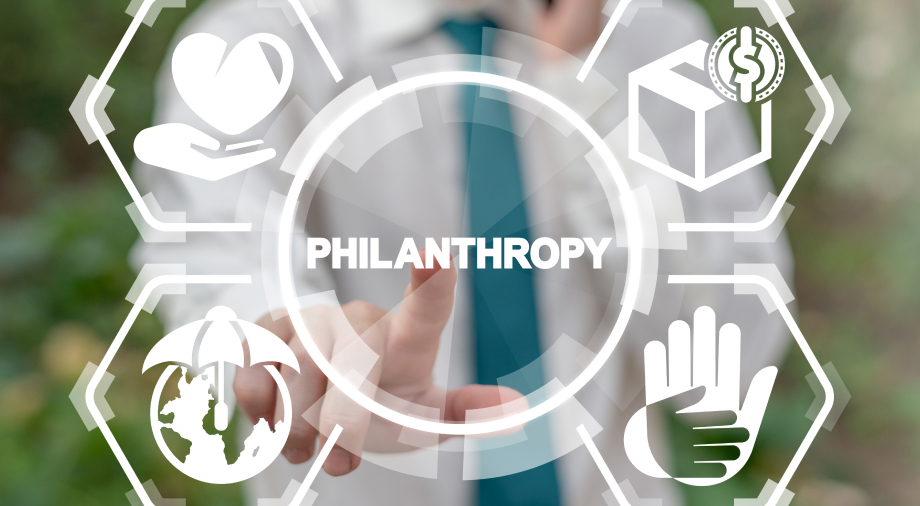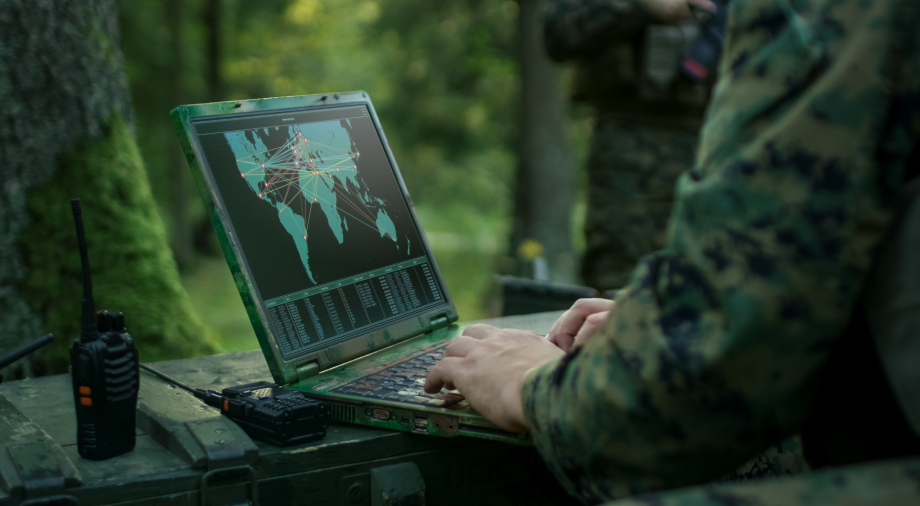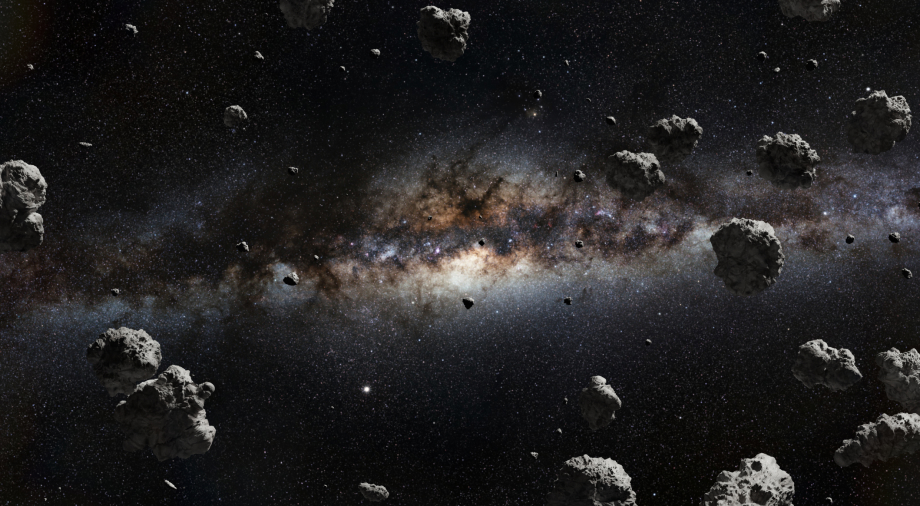The financial support of universities and research centers is increasingly coming under the control of private investors and philanthropists. Their foundations for the development and support of science allocate monetary grants and awards for scientific research, holding open competitions among the most ambitious projects.
Today we will talk about the role of patrons and sponsors in the development of science, and about the most promising competitions, grants, and private educational initiatives, and also about what role philanthropists play in the development of society, especially in difficult times.
Reducing the role of the state in funding universities: The example of Boston University
According to a study by the American Association for the Advancement of Science (AAAS), the period from 2010 to 2013 was characterized by a sharp decline in public subsidies to support and develop scientific research at Boston University. Beginning in 1971, the US recorded a peak of 2% of its federal budget being dedicated to funding for research and development (R&D). The positive dynamics of growth continued until 2004. Since 2005, state financing indicators have begun a gradual decline. For 2014, funding for R&D was only 0.78% of the federal budget.
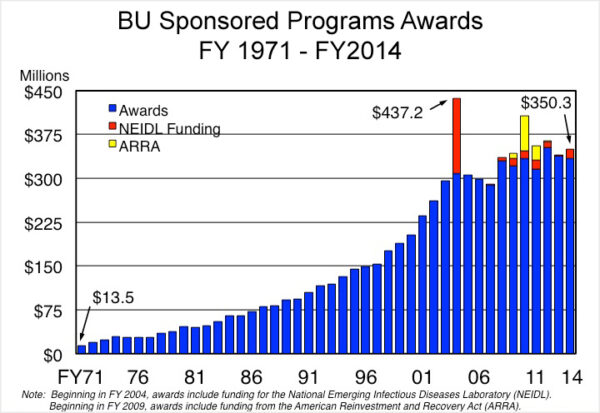
This circumstance seriously disturbed researchers at the university. At one time, federal money allocated as assistance from the National Science Foundation (NSF) Graduate Fellowship program had contributed to the emergence of the world-famous Google search engine through work done at Stanford University. Two graduate students, Larry Page and Sergey Brin, with the support of government funding, created a search agglomeration tool that today itself spends billions of dollars on research projects.
Even the Internet itself, whose depths Google allows us to navigate so effectively, also owes its development to the National Science Foundation and the DARPA (Office for Advanced Study) of the US Department of Defense, which, in turn, worked closely with specialists from the Massachusetts Institute of Technology (MIT) and the University of California (UCLA).
The impact of public funding on the field of science is difficult to overestimate. To this day, it continues to be the leading source of money for R&D (Research & Development) at universities, but the pace of financial assistance is noticeably declining.
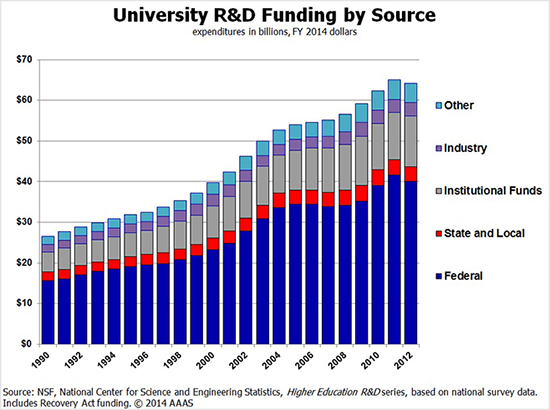
One of the options offered by the government to compensate for budget money is to look for third-party investments from industry. In the end, it is industry that benefits most from scientific research, as it transforms the results of that research into final commercial products for consumers. However, in order to attract this money to universities, it is necessary to accumulate a knowledge base that can put research funding to use in needed fields. The development of advanced engineering and scientific solutions is always a rather lengthy process.
The example of Boston University is only one case in a general trend of reduced public spending on research projects, not only in America but throughout the world. Against this background, the activities of private educational initiatives are becoming more and more pronounced, including the organization of scientific campuses and schools, along with the research and development of technological innovation systems (TIS).
Private educational initiatives and internships
The main task of organizing scientific campuses and schools is to train highly qualified personnel who will be involved in the study and development of new technologies.
A good example is the Chan Zuckerberg Initiative, one of whose aims is to provide education (including science and engineering) to children from low-income families, refugee families, and other families of marginalized backgrounds.
The patronage of educational activities throughout the world is also promoted by the Spencer Foundation. The Foundation’s main educational objective is to build strong ties between schools and higher educational institutions, on the one hand, and promising scientific and civic initiatives, on the other.
A worthy example in the field of supporting national science achievement is the Noosphere Engineering School, created under the patronage of philanthropist Max Polyakov, general partner of the Noosphere Ventures Partners and head of the aerospace company Firefly Aerospace. Polyakov’s Ukrainian origins inspired him to create a working platform for scientific research in his homeland by creating fertile ground for the development and release of innovative technologies to global markets. Today, about 60 scientific projects are being developed within the walls of the Noosphere Engineering School, which includes more than 300 researchers and about 30 technical experts.
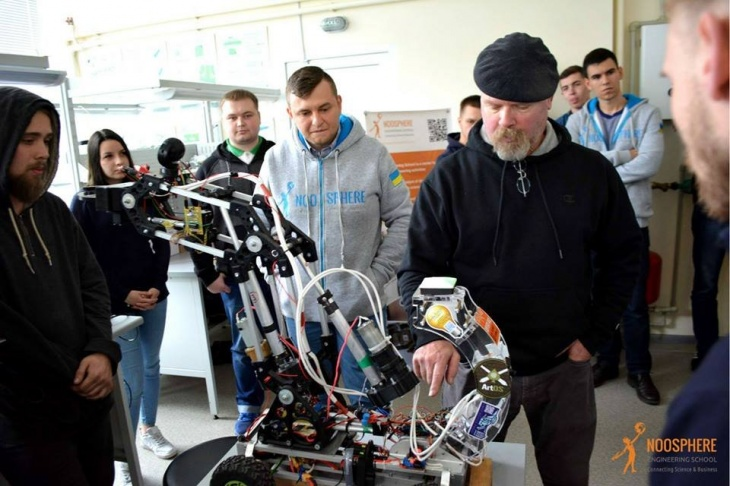
Jamie Hyneman (of MythBusters fame) meets a robot at one of the school’s events
There is also a successful model whereby top companies hold qualifying competitions for promising students, offering internships to top performers.
This is how Google runs their efforts. The company offers young and enterprising students from all over the world a paid summer internship program: the Google Summer of Code. Google selects the projects it likes from among student applications, after which it matches winning applicants with mentors who oversee the implementation of the projects.
The project is divided into three stages (one for each month of the summer), and after successfully completing their project, each participant is awarded a grant of $1500 to $6000, depending on the level of the project and candidate’s country of residence. Obviously, money in this case acts as a bonus, since the main prize, of course, is the prospect of building a career at Google.
Activities of philanthropists during the war
On February 24, 2022, the lives of many people changed before and after. Many people, not only Ukrainians, regardless of their location, are doing everything possible to stop Russia’s aggression.
In turn, many philanthropists from around the world, as well as Ukrainians figures, have prioritized supporting Ukraine at the economic, technological, and other levels. Thus, from the beginning of the invasion, philanthropist and philanthropist and space magnate Max Polyakov helped form a coalition of commercial space companies to collect and analyze satellite images and data. The results were passed on to the Ukrainian military, providing them with a stream of intelligence. With the NGO “Association Noosphere” of which he is a co-founder, Max Polyakov not only continues his activities in full scale, but also launches new social initiatives and projects.

In the first days of the war most of the specialists of the NGO “Association Noosphere” joined the ranks of volunteers. Someone became part of volunteer centers in Dnipro, where they helped coordinate meetings and deliver electronics for the front and rear, or were engaged in the purchase of medicines and other necessary things for city hospitals. For a while, Noosphere Engineering School became the venue for practical classes and lectures on first aid and self-defense. The Noosphere Planetarium hosted dozens of free tours for the displaced, including a movie screening, a live lecture-starry sky tour, and a tour of the exhibition area. Participants of the Noosphere Archeology and WheelKeep projects created buffer protective structures around the stone sculpture in the courtyard of the Historical Museum in Dnipro. The famous TV presenter, judge of the Vernadsky Challenge 2017, legendary myth-buster Jamie Heineman, who condemned Russian aggression and recorded a video in support of Ukraine, did not remain indifferent to the war in Ukraine.
Significant support for Ukraine was provided by SpaceX founder Elon Musk, Microsoft founder, philanthropist and philanthropist Bill Gates, Amazon founder Jeff Bezos, Virgin founder Richard Branson and many, many others who did not remain indifferent.
All these people have always responded to the needs of the world, investing their own funds in the development of science, education, and medicine. And their help during the war only increased, but did not stop all the initiatives they created for the development of society and humanity.
Research funds, competitions and grants
When it comes to organizations responsible for shaping R&D discoveries, one cannot but mention the foundations that contribute to their financing. The following is just a small list of active science-promoting foundations:
- Science Foundation Ireland is an Irish foundation for the advancement of science. The main priorities in the foundation’s 2025 program are AI systems, immunology, and climate change prevention.
- Harry Frank Guggenheim Foundation is a one-of-a-kind foundation that focuses on the emergence of violence in society and develops initiatives to control and reduce it.
- Belgian National Fund for Scientific Research – The foundation’s main goal is the development of international scientific cooperation. To do this, the foundation invites and sponsors foreign scientists and promotes the participation of Belgian specialists in global scientific projects.
- Noosphere Venture Partners LB – This foundation promotes investments in the aerospace sector, which includes the development and production of satellites, orbital equipment, launch vehicles, spacecraft components and sensors, and orbital Earth observation centers.
- Japan Society for the Promotion of Science (JSPS) – The Society plays a significant role in building the processes of administration of scientific activities. Although the organization mostly works with the humanities and social sciences, there are also projects aimed at supporting the natural and hard sciences.
These foundations work on a system of open competitions, providing grants to the most interesting projects – generous subsidies for scientific research, engineering and design work, and the remuneration of researchers.
Some scientists are concerned about the trend of transferring scientific activity to the area of the grant model of distribution of funds, believing that the financing of the scientific industry should be carried through state budgets and institutions not biased by third-party interests. However, successful examples of the functioning of the competition/grant model of private financing are tempering the concerns of many skeptics.
Private investments in the scientific sphere not only influence the development of science and engineering, but also contribute to the redistribution of national budgetary funds, reducing the economic burden of this issue for the state. Governments, in turn, are able to use their funds on useful social and economic initiatives.
Motivating and supporting young businesses
Competitive support programs provide financial assistance in the development of new ideas in science and technology.
One of these competitions is the Vernadsky Challenge, organized in honor of the scientist, philosopher, and author Vladimir Vernadsky. The winner of the competition receives a grant of $70,000, which can be used to develop their engineering projects. The Vernadsky Challenge focuses on aerospace technologies, as well as active bioelectronics and medicine;, that is, the range of technologies designed to expand the limits of the human body and provide innovative medical solutions. Eight of the 13 winners of the Vernadsky Challenge, after their debut on this stage, have managed to attract outside investments for their projects using crowdfunding platforms such as Kickstarter and Indiegogo. In addition, more than ⅔ of Vernadsky Challenge finalists have successfully brought their projects to life, bringing them to the stage of prototyping and commercial production.

The top winner of the Vernadsky Challenge for 2021 was the Spanish team Medicsen, which developed a reusable smart patch for non-invasive injections, designed for more than 30,000,000 applications. The device introduces a medicinal injection using ultrasonic vibrations on the human skin. The procedure for the introduction of large molecular drugs lasts for a minute and does not damage the skin. The required dosage is calculated by adjusting the smart patch using a dedicated smartphone app. This technology could become indispensable in space missions. In 2023, Mediscan plans to start the first trials of its smart patch prototype on a group of 500 volunteers and start shipping its products to market in 2025.
The winners of another contest, the Columbia Venture Competition, biomedical engineers Jacob Nye and Bina Bansinat, developed the innovative technological platform ColonAI, which operates using machine learning technologies. Artificial intelligence is able to analyze medical images during a colonoscopy procedure and determine if patients have certain forms of rectal cancer. The grant that the company received for the development of its platform amounted to $25,000, while the total prize pool of the competition totalled $300,000. This money will be distributed among the most ambitious startups.
There are also competitions which focus on solving environmental problems. One of these is the Emerging Engineers Competition, hosted by OceanWorks and UWA, the top group in Australia for ocean research. The 2022 iteration of UWA Girls in Engineering invited female Australian students to address micro-plastic pollution in ocean waters, which poses a serious threat, especially in areas of major sea transport routes, as well as channels and rivers where non-degradable waste accumulates. Effective methods of solving this problem could save millions of dollars annually in environmental costs, and also provide women professionals with invaluable experience in collaboration in the field of STEM .
In addition to the potential financial benefits that universities, sponsors, and patrons receive from these scientific and engineering competitions, they also motivate thousands of young inventors around the world to devote time to solving the most pressing scientific challenges and problems.

